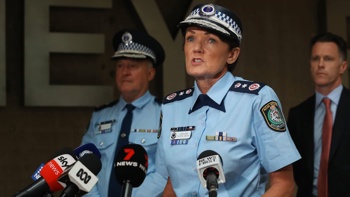An Auckland-based doctor's ground-breaking research, involving lab-cultivated, living, beating heart cells, could land a blow against a major killer of Kiwi children.
A new effort has been launched to keep Swedish paediatric cardiology expert Dr Annika Winbo's pioneering work here in New Zealand.
Winbo's studies aim to better treat children who suffer cardiac inherited diseases, particularly long QT syndrome (LQTS), which mostly affects children and young adults with frequent faints, but sometimes results in sudden death.
Each year, an estimated 100 people aged between one and 35 years old die from sudden or unexpected cardiac death.
Because the syndrome, characterised by abnormal electrical activity in the heart, is typically inherited, each child of an affected parent has a 50 per cent chance of suffering it.
"Some children can live normal lives when they're on medication, but I've talked to some parents of children who are sick, and they've never, ever, left their kids with a babysitter," said Winbo, who shared her new insights at an event at Auckland Hospital today.
Other parents were afraid to run around and play with their children, for fear of over-stimulating them.
As part of an international effort, Winbo has helped create a type of stem cell model derived from the blood of five young Swedish LQTS sufferers.
Alongside University of Auckland physiologist Associate Professor Johanna Montgomery, Winbo has developed the stem cells, which can be matured into virtually any type of cell in the human body, into heart cells.
Remarkably, this has meant that living, beating human heart cells with the exact same genetic makeup as the LQTS patient donors can be tested for arrhythmia susceptibility and that potential treatments can also be tested against the new models.
Winbo and Montgomery are now pushing forward with another model, where both human heart cells and the human neurons responsible for the so-called "fight-or-flight" response, important for triggering life-threatening arrhythmia in LQTS, could be characterised and assessed while growing together.
By better understanding the links between neurons and heart cells, the researchers hope to reveal the arrhythmia mechanics at play, and ultimately guide the way to new, disease-specific therapies for the syndrome.
There was further exciting potential in steering their scientific groundwork toward other inherited child diseases that involved a cellular basis.
Winbo said the Cardiac Inherited Disease Group (CIDG) she's part of draws on a registry of Kiwi patients, with genetic profiles unique to New Zealand.
Since its formation, the CIDG has become the gold standard for similar efforts around the globe and has proven instrumental in saving many young peoples' lives.
"This work is taking off but my fellowship ends in July; I'd definitely like to continue my research here, but if not, I'll have to carry on back in Sweden within my current contract."
The charity Cure Kids, which has contributed more than $1.5 million to the CIDC in more than a decade, is now raising funds toward Winbo's work so she can remain here.
While Cure Kids was targeting large donations, people interested in contributing to the programme could email [email protected].
Brave boy's fight against cardiac condition
Watching a child compete in school cross country is a highlight of Kiwi parenthood but for the mother of 8-year-old Hilal Otri, it's daunting.
"It's a really stressful time for me, seeing him run around the field, and with the added excitement of competition, it's quite terrifying," Jessica Allan said.
Cross country is one of the limited number of sports Hilal can participate in.
Playing any contact sports, or swimming by himself, is out of the question because of his high risk of cardiac arrest, or damaging the device implanted next to his heart.
His family had no clue about his susceptibility to cardiac arrest until the day in 2014 when Hilal, then aged 5, collapsed while playing with his grandfather Alex at the beach.
"They had to re-start his heart two times at the A and E, and once in the ambulance," she said.
"When we were flown up to Auckland, we didn't know, A) if he was going to live, or B) if he did, what he'd be able to do, if anything."
Hilal spent the following months in and out of hospital, where he had a monitoring device inserted in his chest.
The device would need to be continually replaced until he grew into an adult.
"He may have another cardiac arrest, but he may never have another one. We don't know."
Allan said her son hadn't tested positive for known types of LQTS, but having his genetic make-up sequenced and then compared with DNA of relatives could potentially reveal a new form.
She was impressed with the pioneering work presented at Auckland Hospital, where Hilal also got to spend time with All Blacks George Moala, Reiko Lonie and Scott Barrett.
"Any sort of research that's going to stop people having to live through what we have, I'm absolutely in support of and would love to see it go ahead."
Take your Radio, Podcasts and Music with you









